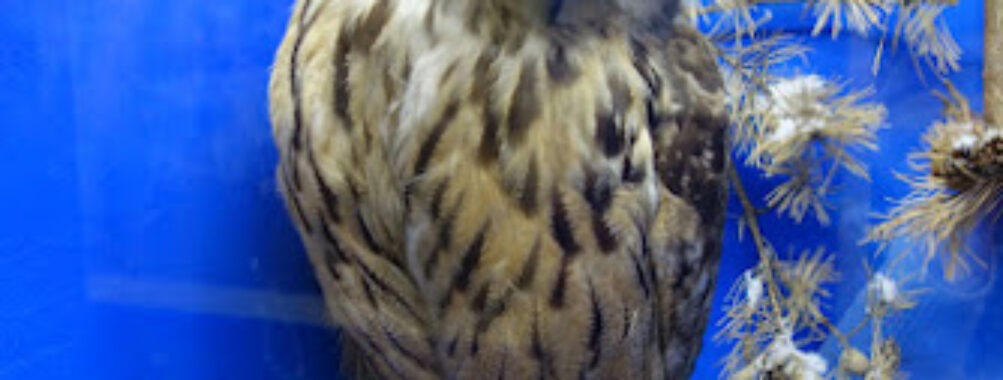
Dzerzhinsky Local Lore Museum
Table of Contents
Description
The Dzerzhinsky Local Lore Museum in Dzerzhinsk, Nizhny Novgorod Oblast, Russia, is presented as a compact but thoughtful celebration of regional history and everyday life. Visitors will find a museum that leans into its strengths: clear storytelling, carefully curated artifacts, and a strong local voice. The collection traces the area’s industrial roots, social history, and wartime memories, while also touching on the Soviet period in ways that feel informative rather than theatrical. It is the kind of place that rewards a curious mind more than a casual sprint through.
Unlike sprawling national museums, the Dzerzhinsky Local Lore Museum wears its modest size proudly. Galleries are arranged to guide visitors through themes rather than through overwhelming massed displays. There are objects—tools, household items, photographs, uniforms—that connect the lives of ordinary regional people to larger historical currents. A particular strength is the way small, personal stories are woven into displays: labels often include names and dates, and occasional handwritten notes or donated family photos give the exhibits a human scale. That approach means the museum can leave a more intimate impression than a room full of anonymous artifacts ever could.
Exhibits about the Soviet era and the industrial development of the city are presented with solid context. The narrative does not shy away from complexity; it points out the achievements of local industry, but it also records the social changes and challenges those developments brought. A visitor who likes to connect dots between local events and national history will come away satisfied. And for travelers who have read about famous Russian figures or institutions, there are contextual references that help place Dzerzhinsk in the broader story of the Russian Federation and its 20th-century transformations.
Practical details matter here: the museum provides public restrooms, a welcome feature on any day out. There is no on-site restaurant, so visitors should plan to eat before or after the visit or bring snacks where appropriate. Parking is available nearby, but it should be noted that the site does not have a wheelchair accessible parking lot; travelers with mobility needs may want to check ahead or arrange alternate transport. On a positive note, many families report the museum is good for kids—interactive displays, well-paced rooms, and relatable objects help younger visitors stay engaged. The place doesn’t try to dazzle with gimmicks; instead it invites children to touch on the slower, more tactile joys of learning: pointing at a toy from the 1950s, comparing old and new household gadgets, or tracing a family name in a photograph.
Staff at the museum tend to be local, and that often translates into genuine warmth and helpfulness. A frequent remark among regulars is that the curators and guides seem proud of their collection; they will happily unpack a story behind an object if you stop and ask. For an English-speaking traveler, it’s fair to expect that most signage and explanations will be in Russian—so if someone in the party reads Russian, the visit will be more immediately rewarding. That said, patience and curiosity go a long way; gestures, maps, and a bit of translation app use can bridge most gaps. A long-time guide once told visitors that a single photograph in the archive had changed how the town understood an entire decade—small moments like that underline how local museums can unexpectedly alter perspectives.
The atmosphere inside is unpretentious. Lighting is practical, text panels are readable, and the layout encourages lingering. Because the museum sits within a working city, the surrounding area feels lived-in rather than staged for tourists. That can be a breath of fresh air after a day of crowded landmark-hopping: here, one can hear the town, not just see it. If a traveler enjoys discovering the local rather than the national, Dzerzhinsky Local Lore Museum will likely feel like a find.
There are a few caveats to keep in mind. The museum is not a high-tech showpiece; visitors seeking immersive audio-visual extravaganzas or multilingual multimedia tours may be disappointed. Some exhibits are text-heavy and assume a baseline knowledge of regional history. Also, because the museum focuses closely on local subjects, it sometimes prioritizes depth over broad sweep—meaning that while it illuminates the city and its immediate surroundings very well, it does not attempt to substitute for a major regional museum in Nizhny Novgorod.
For planning purposes, allow at least an hour to 90 minutes for a relaxed visit. That gives time to read captions, appreciate small displays, and chat with staff if they are available. Photographers who favor detail shots will find interesting textures everywhere: worn labels, old wood, and sepia-toned portraits. The museum’s quiet corners are good for contemplative visitors who like to connect artifacts with stories—one could easily spend longer if they are absorbed by genealogy or local industrial history.
Finally, the Dzerzhinsky Local Lore Museum is the sort of stop that slips pleasantly into a regional itinerary. It resonates most with travelers who prefer authentic, local perspectives and who enjoy museums that feel grounded. It may not compete with capital-city attractions in scale or polish, but it often outperforms them in intimacy and specificity. In short: a worthwhile visit for anyone who wants a clearer sense of Dzerzhinsk, its people, and the particular history of this part of the Nizhny Novgorod Oblast.
Location
Places to Stay Near Dzerzhinsky Local Lore Museum
Find and Book a Tour
Explore More Travel Guides
No reviews found! Be the first to review!